Charlotte Rulquin (IBDM)
Computational study of cell pattern emergence in embryonic and tumorigenic tissues
Team: Raphaël Clément (Team Lenne, IBDM) - Cédric Maurange (IBDM) - Andrea Pasini (Team Kodjabachian, IBDM)
Her background
September 2018 - present | CENTURI postdoctoral fellow
2017 - 2018 | Postdoctoral fellow, Commissariat à l'Énergie Atomique (CEA Saclay, France)
2014 - 2017 | PhD, Laboratoire de Physique Théorique de la Matière Condensée (UPMC, Paris, France)
2014 | MSc degree in Theoritical Physics of Complex Systems - Sorbonne Université Campus Pierre et Marie Curie (Paris, France)
Contact
About her postdoctoral project
The ability of tissues to self-organize into regular patterns of cells with different identities is central to animal morphogenesis and depends on both biological and physical factors. Mathematical models derived from mechanics, dynamical systems and statistical physics have proven relevant to study how interactions between cells with different behaviors can drive tissue self-organization and morphogenesis. We propose to investigate numerically the formation of multi-cell patterns observed in two distinct types of tissues often opposed for their stereotyped vs seemingly disorganised structure : the embryonic epithelium and brain tumors. The numerical framework will be based on observations made on experimental systems amenable to genetic manipulations: the amphibian Xenopus laevis and the fly Drosophila melanogaster. In Xenopus, we will study how epidermal multiciliated cells (MCCs) distribute in a regularly spaced pattern upon intercalation into an epithelial layer, and explore how the pattern is established and maintained through a balance between mutual repulsion among MCCs and attraction between MCCs and outer layer epithelial cells. In Drosophila brain tumors, we will study how clusters of cancer stem cells (CSCs) form and how they affect tumor progression. We will investigate how physical (tension, adhesion) and biochemical cues (growth and differentiation factors) contribute to segregate clusters of proliferating cells with different self-renewing potentials, regulate their size distribution and density, and thus determine tumor growth rate. These projects will be investigated numerically with tools akin to the cellular Potts model, and will be carried out in close collaboration with experimentalists.







